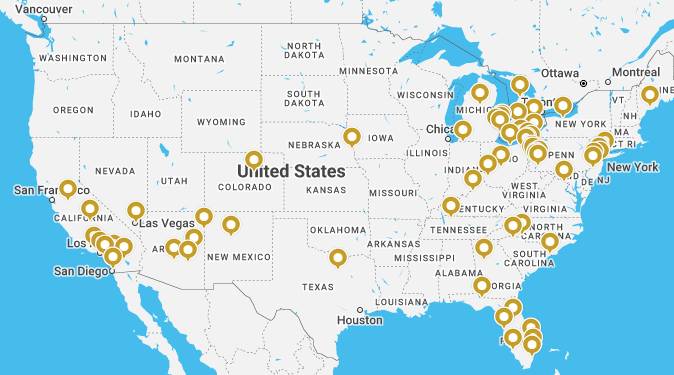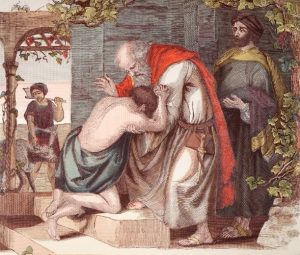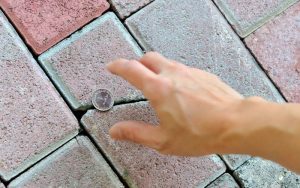After relating the parable of the sower and the parable of the wheat and tares to the large audience that was gathered, Jesus shares two more short parables with them before dismissing them for the day (see Matthew 13:31-33, Mark 4:30-32, Luke 13:18-21).
- In the first of these parables, Jesus says the kingdom of God on earth is similar to when a tiny mustard seed is planted and grows into a large tree with birds living in the branches.
- In the second parable, Jesus says the kingdom is similar to leaven being hidden in (added to) dough such that it then spreads completely throughout the dough.
These two parables are presented together in this article because their general meaning is similar. However, depending which details of the parables you focus on, that general meaning can differ.
Looking at the parables in one way, you come away with an exciting picture of the kingdom of God beginning with something tiny and then growing or expanding into something large. But looking at the parables in a different way, you see a sobering depiction of how the enemy can infiltrate and affect the kingdom. Both are actually valid interpretations, depending on the era of time you apply them to.
Let’s begin with the second interpretation, looking at the details of the parables this way:
- Although a mustard seed can occasionally produce a sizable tree, it typically grows into a relatively small mustard plant. So, the large tree that grows in the first parable could be indicating that the kingdom will turn into something other than what was intended, perhaps growing very large primarily to accommodate the birds (which may not be a desirable outcome, based on the next point below).
- In the parable of the sower, which Jesus just shared with the same group, the birds represented the devil snatching the word out of the hearts of those who heard it. The birds could well represent the same thing in this parable.
- In the second parable, the woman hides the leaven in the dough and then it spreads throughout the dough. If the leaven represents something evil, this is a very similar message to the parable of the wheat and tares which Jesus has just related to the same group, with the evil infiltrating and spreading throughout the kingdom.
- Leaven actually does represent evil — sin or false doctrine — in other scriptural references. Paul uses leaven to represent malice and wickedness and says that “a little leaven leaveneth the whole lump” (1 Corinthians 5:6). Jesus warns His disciples to beware of the leaven (doctrine) of the Pharisees and Sadducees (Matthew 16:6,12).
Putting all of the above together, you have the kingdom of God (the church) beginning small (with Jesus and a few disciples) and growing into something much larger but then being infiltrated by evil, sin and false doctrine, which eventually spreads throughout the entire church. As we know from church history, this is exactly what happened in the first few centuries and the church eventually went into apostasy. So, these two parables could be foretelling this sequence of events.
However, there is another possible interpretation — one that pertains to the church today. Let’s look at the parables this way:
- The mustard seed is used elsewhere in scripture (Matthew 17:20, Luke 17:6) to represent faith so it would seem that this should grow into something good. In fact, Alma likens faith to a seed that, when it is planted, grows into a tree (see Alma 32).
- The unusual growth of the mustard seed can be likened to unparalleled growth of the kingdom of God.
- The birds can represent people who will find shelter in the church from the storms of life.
- The leaven can represent the gospel and the dough can represent the world, meaning that the gospel will permeate the entire world.
The restoration of the gospel has provided a second opportunity to build the kingdom of God on earth. Isaiah prophesied that “the Lord shall set his hand again the second time to recover the remnant of his people” (Isaiah 11:11; also see 2 Nephi 25:17).
So, if you start from today, you have the kingdom of God beginning with a small number of members but being projected to grow astronomically as Israel is gathered and joined by the believing Gentiles in Zion.
If you read Nebuchadnezzar’s dream of the large metal image in Daniel 2, The Church of Jesus Christ is represented by “the stone that was cut out without hands that smote the image and became a great mountain, and filled the whole earth” (Daniel 2:34-35). When Daniel interpreted that dream for the king, he explained that “the God of heaven [will] set up a kingdom, which shall never be destroyed: and it shall stand forever” (Daniel 2:44).
We are living in the era of time that will lead to the establishment of this great kingdom of God. So, let’s each do our part by maintaining our mustard seeds of faith and doing what we can to help grow the kingdom. Cling to the gospel of Jesus Christ — it’s going to fill the entire earth. How exciting it will be to witness the growth of the kingdom of God on earth!
This article has undergone ministry review and approval.





0 Comments